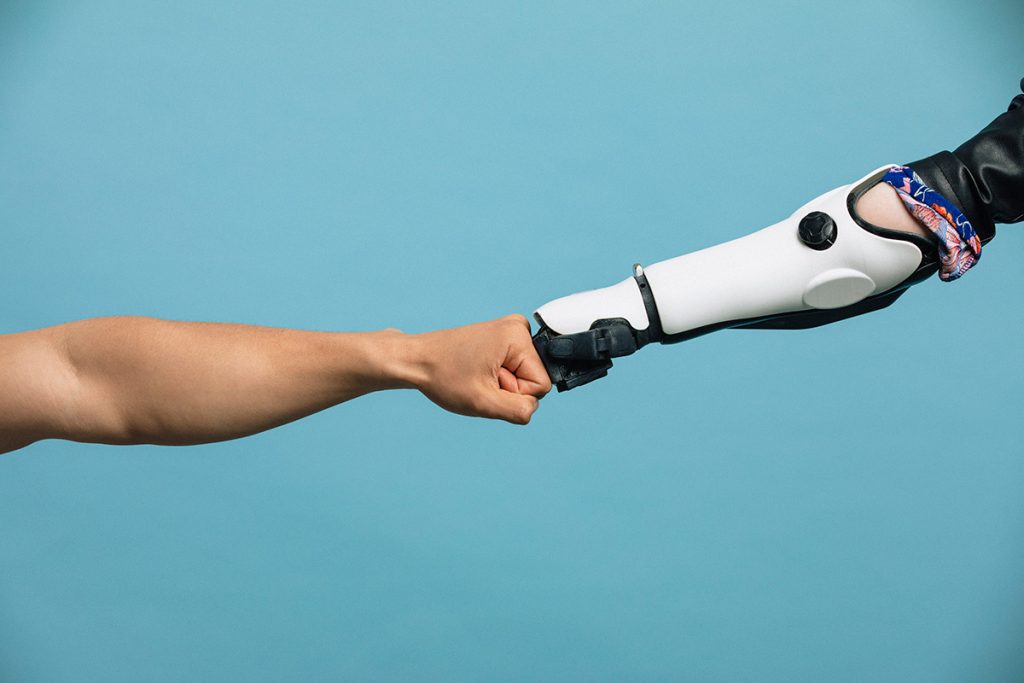Now that ChatGPT has your attention, what comes next?

By Kate Bezrukova and Chester Spell

It has been here a while, but now it has our attention! That’s the feeling many people have been getting about Artificial Intelligence (AI) recently. The last few weeks have seen an explosion of interest in AI, much of it due to the emergence of the program ChatGPT. There is little doubt that a lot of this interest is connected to all the things that ChatGPT can do well (write papers for college students) and maybe not so well (create recipes for Thanksgiving dinner, which food critics of The New York Times panned). There have also been plenty of stories about ChatGPT working in “unexpected ways” or AI gone awry (weird tales of AI professing its love for people interacting with it).
Our predictions of what ChatGPT or its inevitable “improvements” or future versions might do are no better than anyone else’s. But before this became such a big story, AI itself has been a topic of rather intense attention, especially in how it might or already has affected the workplace. There is little question that the implications of AI for many types of jobs are profound. Some jobs will be eliminated. Some will be enhanced in one way or another. But before any of that widely happens, AI has got to actually be adopted and introduced into millions of work situations.
The question of how AI weaves its way into work is important.
Connected to the question is how AI gets accepted and actually used by people in significant sectors of the workforce. That is the point of a paper we recently published in the journal Group and Organization Management with colleagues Terri Griffith, Vincent Rice, and Evangeline Yang. To better understand how the spread of AI (and ChatGTP, as an example of AI) might go, we reviewed all the research we could find on workplace-focused AI. This group of research articles included AI used to help doctors diagnose illnesses, AI used for scheduling, and AI used for rescue missions using robot dogs (no kidding). Especially, we were interested in accounts of how innovative uses of AI find their way into the workplace and how people may operate and interact with AI as a type of teammate. Think of AI, in some form, as a member of your work team.
If you are thinking that AI simply eliminates jobs, paving the way to some type of dystopian future, that is not what we focused on. However, the fear of losing a job to AI or any technology is real and is as old as the workplace itself. We are reminded of the 19th-century accounts of the Luddites in England who destroyed the new technology of the day—textile machines in cotton mills. So while these reactions are nothing new (people don’t like change when their paycheck is in question!), if you think AI represents something fundamentally different about workplace change, then considering how to introduce it is important.
So what matters in determining the spread of AI and how rocky it will be for employees?
In our review, we discuss two factors that often come up related to how successfully AI will be implemented. One is the initial reaction or attitude of employees towards AI, even before it becomes a “teammate.” Face it, some people are inclined to be wary of any workplace change, and this would also be true of AI, whether it is a threat to their employment or not. Others are curious about AI and may see it as a potential benefit to them. But those attitudes are there from the beginning.
What can employers do to increase the chances of a better transition? That’s where another factor becomes important, which is the amount of discretion or influence employees have over the “newcomer” AI. In some workplaces, AI is initially an option or something that a fraction of the workforce can use. Decades of industrial psychology research have shown us that people feel better when they feel they have control over their work and some sense of autonomy. People are more likely to accept something if it is not forced upon them! As a newcomer to the work life of many, AI and the way it is perceived will be important, and this classic research seems as relevant in today’s workplace as ever.
To see how this might work, let’s return to ChatGPT. In our universities, numerous seminars are already being held on how to use it in the classroom, as opposed to how to block it or reverse its effect, or simply detect whether students are using it (efforts to “undo” new tech are unlikely to be successful if history is a guide). Knowing how to incorporate it into the educational environment seems more likely to make educators less apprehensive about how it might be misused. These types of organizational efforts may change how people see AI and influence their attitudes toward AI. Our hope is that workplaces, and the people who make decisions about AI, will keep the attitudes of employees going in and the amount of autonomy people have in mind as they move forward.
This article was first published by Psychology Today.
Kate Bezrukova, PhD, is chair and associate professor of organization and human resources in the University at Buffalo School of Management. She is an expert on team chemistry, managing a diverse workforce, negotiations and gender, and conflict management. Her research examines group faultlines, diversity, and conflict evolution and management.
